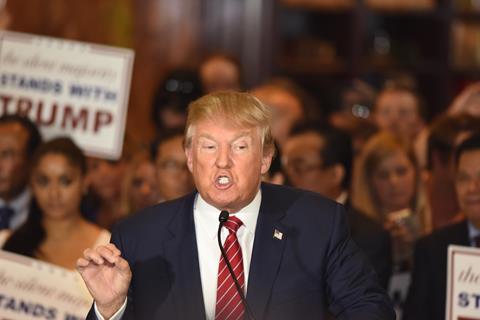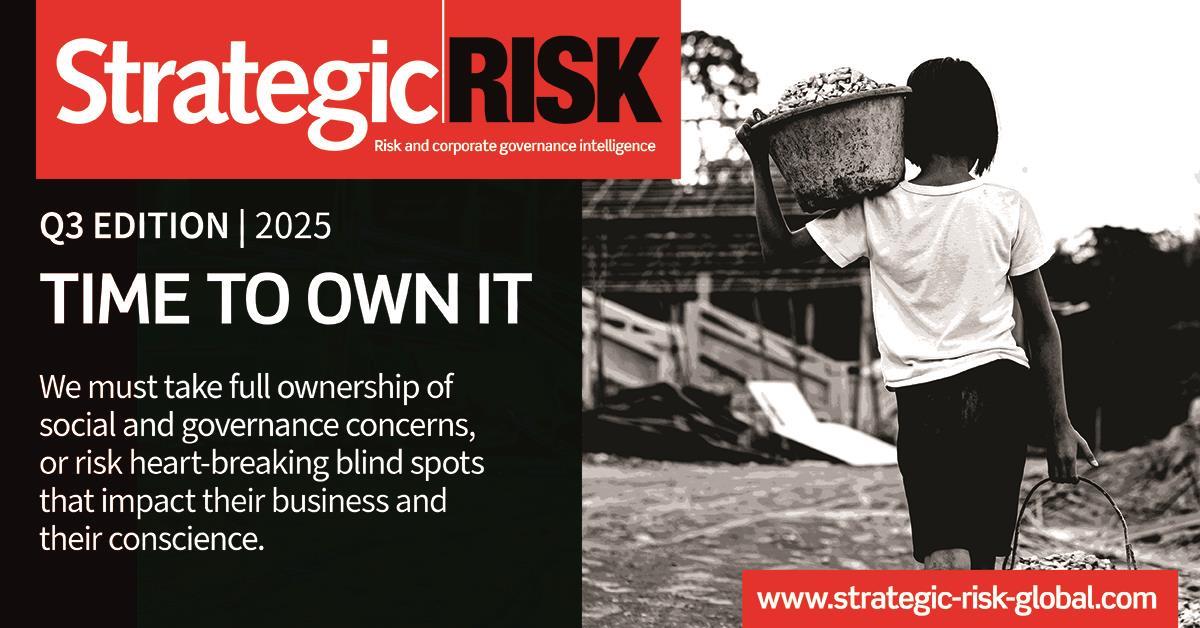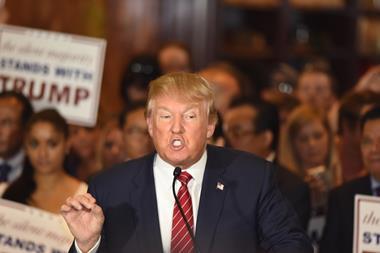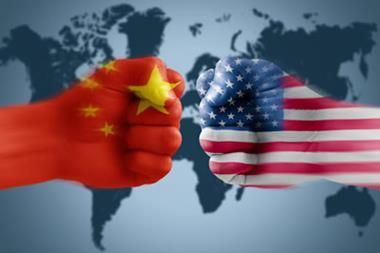Trump’s so-called “flexibility” on tariffs — marked by delays and shifting targets — has plunged global trade into uncertainty, forcing risk managers to brace for every scenario.
“It’s not called inconsistency. It’s called flexibility,” said US President Donald Trump regarding his approach to tariffs — a policy that has defined his second term in office to date.
He was responding to a reporter who referenced his “on and off” stance on the issue.

Although Trump has proposed tariffs of 25% on imports from Canada and Mexico, a 10% tariff on Chinese goods and hinted at various other tariffs, the implementation of these measures has been delayed on several occasions.
His approach has so far demonstrated both firmness and unpredictability. At the time of writing, sweeping tariffs on a major trading partner are scheduled to take effect in early April, although they were initially set to be implemented in March before being postponed by Trump.
These actions have injected considerable uncertainty into global trade, compelling risk managers to brace for a range of potential scenarios. Here is StrategicRISK’s assessment of where Trump’s tariffs may ultimately land:
Scenario 1: Trump eliminates all tariffs
In this scenario, the administration removes all existing tariffs, aiming to foster free trade and strengthen international relationships.
Implications for risk managers:
- Supply chain optimisation: The removal of tariffs would reduce costs for imported goods, allowing companies to streamline supply chains and negotiate better terms with suppliers. This could lead to increased profitability and competitiveness in the global market.
- Market expansion: Eliminating tariffs could open new markets and enhance competitiveness, providing opportunities for business growth. Companies may find it easier to enter foreign markets without the burden of additional costs, potentially leading to increased market share and revenue.
- Currency considerations: A shift toward free trade might influence currency valuations. A stronger US dollar could make exports more expensive, affecting international sales. Risk managers should monitor exchange rates and consider hedging strategies to mitigate potential currency risks.
Likelihood: Eliminating all tariffs is highly unlikely given Trump’s entrenched protectionist rhetoric and political base.
Scenario 2: Trump softens tariff policies
The administration opts to reduce tariff rates or exempt certain products, aiming for a more balanced approach to trade protectionism.
Implications for risk managers:
- Partial cost relief: Lower tariffs would decrease costs for specific imports, benefiting industries reliant on those goods. For example, a reduction in tariffs on raw materials could lower production costs for manufacturers, improving profit margins.
- Selective supply chain adjustments: Companies may need to reassess supply chains for products still subject to tariffs, while optimising those with reduced rates. This selective approach requires careful analysis to identify which adjustments will yield the most significant benefits.
- Regulatory compliance: Navigating a mixed tariff landscape requires diligent compliance efforts to avoid penalties. Risk managers should stay informed about policy changes and adjust procurement strategies accordingly. Engaging with legal experts to interpret complex trade laws may be necessary.
Likelihood: A moderated approach to tariff softening is moderately likely, as ongoing negotiations with key trading partners could yield partial concessions without a full rollback.
Scenario 3: Trump maintains current tariff strategy
The administration continues with the existing tariff structure, including the planned April increases on specific sectors.
Implications for risk managers:
- Cost management: Sustained tariffs necessitate ongoing strategies to manage increased costs, such as exploring alternative suppliers or passing costs to consumers. Companies may need to invest in cost-reduction initiatives or seek efficiencies elsewhere to maintain profitability.
- Inflation monitoring: Persistent tariffs can contribute to inflationary pressures. Risk managers should monitor economic indicators and prepare for potential impacts on pricing and consumer demand. This may involve adjusting pricing strategies or reevaluating product offerings.
- Geopolitical vigilance: Maintaining current tariffs may strain international relations. Staying abreast of geopolitical developments is crucial for anticipating and mitigating risks. Companies should engage in scenario planning to prepare for potential escalations or policy shifts.
Likelihood: Maintaining the current tariff strategy is the most probable outcome, reflecting the administration’s commitment to its established protectionist agenda despite occasional delays.
Scenario 4: Escalation to a full global trade war
The administration imposes additional tariffs, leading to retaliatory measures from other countries and a comprehensive global trade conflict.
Implications for risk managers:
- Severe supply chain disruptions: Escalating tariffs could lead to significant disruptions, requiring comprehensive supply chain restructuring and contingency planning. Companies may need to identify alternative suppliers, relocate production facilities, or increase inventory levels to mitigate risks.
- Economic downturn: A global trade war may trigger recessions in key markets, reducing demand for products and services. Risk managers should prepare for potential revenue declines and increased volatility. This may involve reevaluating investment plans, reducing operational costs, or diversifying product lines.
- Regulatory complexity: Navigating a landscape with widespread protectionist policies would increase compliance challenges. Companies may need to invest in enhanced compliance programs and legal expertise. Engaging with industry associations and government bodies to advocate for favorable trade policies could also be beneficial.
Likelihood: Escalation into a full global trade war remains the least likely scenario, given the potentially devastating economic fallout and the mutual deterrence among major economies.
Key takeaway
The trajectory of US trade policy under President Trump presents a spectrum of scenarios, each with distinct risks and opportunities.
Risk managers must adopt a proactive and flexible approach, continuously monitoring policy developments and adjusting strategies to safeguard their organisations’ interests in an unpredictable global trade environment.














No comments yet